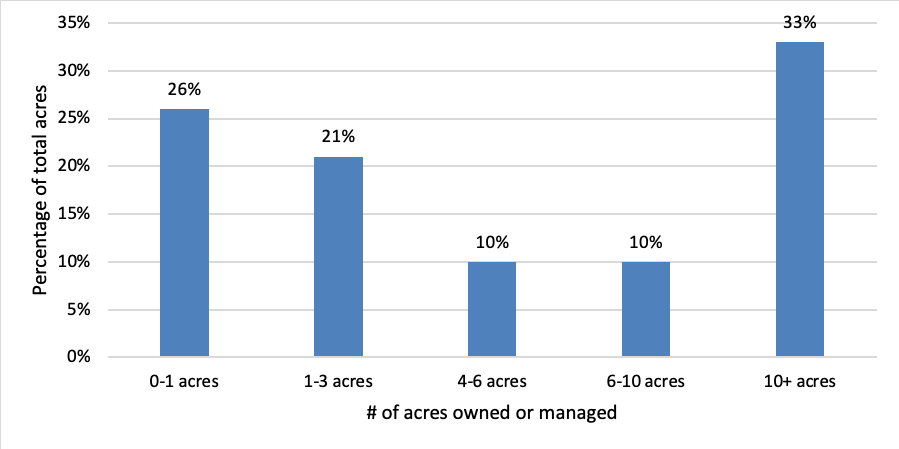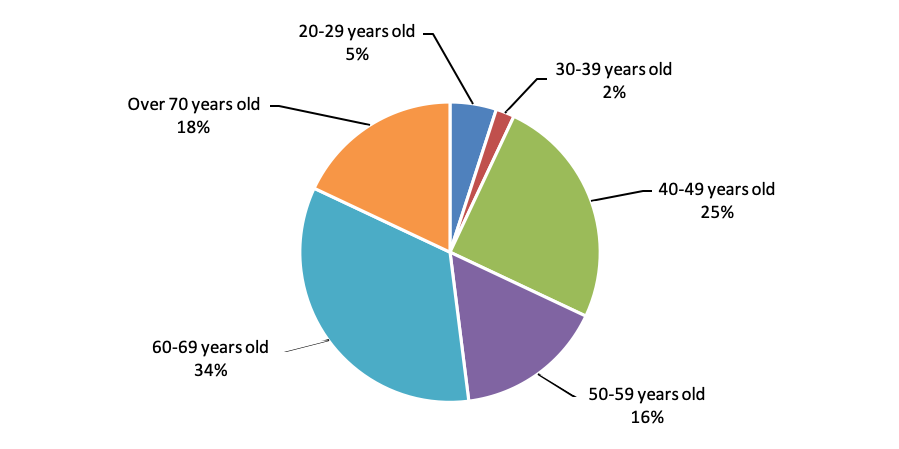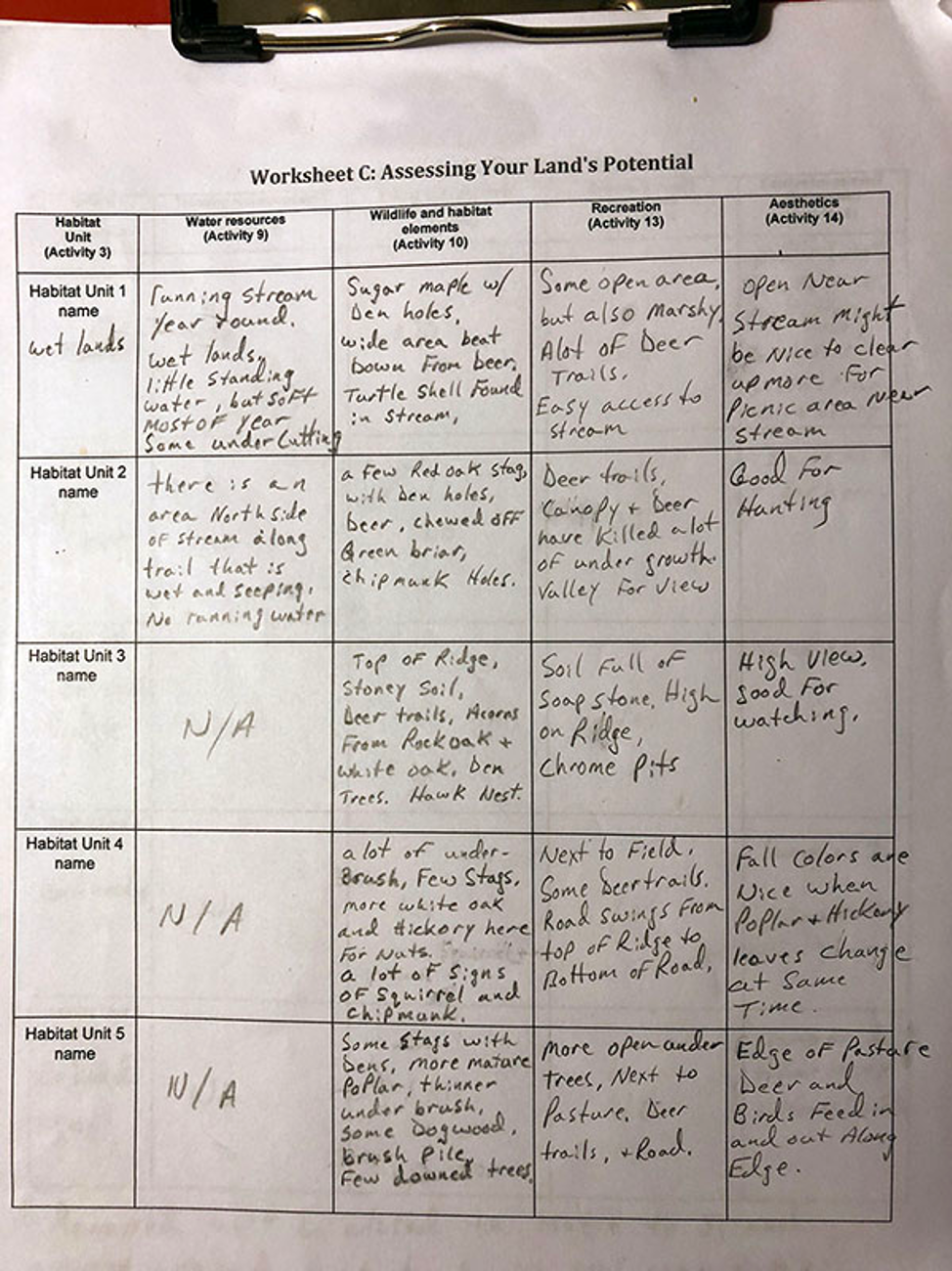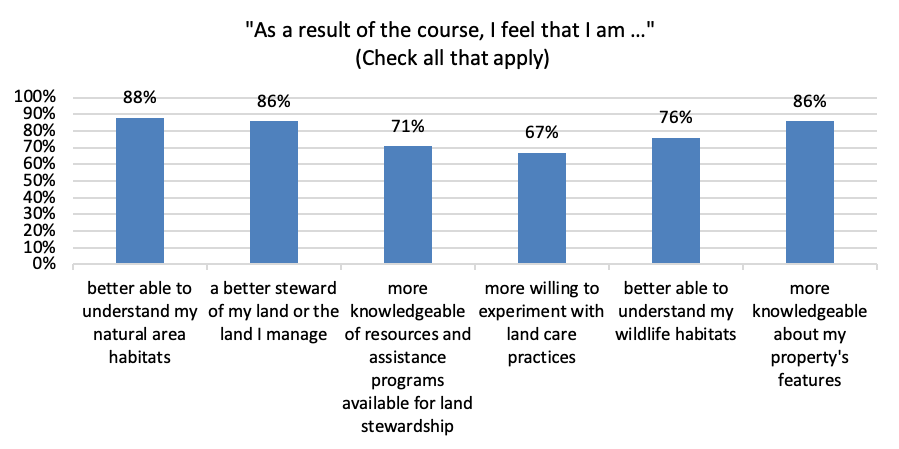 |
April 2020
|
April 2020 // Volume 58 // Number 2 // Ideas at Work // v58-2iw4
Successful Method for Converting an Existing Woodland Stewardship Program to an Online Program
Abstract
In 2016, we debuted an online version of a long-running woodland stewardship Extension program to reach property owners unable to attend traditional workshops. In the first 2 years, 119 participants enrolled. They owned or managed 1,796 ac, and many were in an atypical age demographic. In a follow-up survey of 67 participants, 96% of respondents indicated having undertaken one or more of the targeted land care practices, and two thirds indicated having converted some lawn to natural area. Additionally, participant feedback led to several program improvements. The online course is an effective means for imparting an important stewardship ethic. Our methods and lessons learned may guide other Extension staff wishing to convert existing programming to online offerings.
Introduction
Online programs enable Extension to reach new audiences (Allred & Smallidge, 2010). As part of our Woodland Stewardship Education (WSE) program, we have created a noncredit, self-paced online course that is an adaptation of our signature The Woods in Your Backyard (WIYB) program for just such a purpose. The lesson-based, activity-driven course provides a wide range of resources, tips, and techniques for small woodland owners and managers. In this article, we describe development of the online course, present noteworthy participant demographics, exemplify improvements we have made in response to participant input, and discuss the course's impacts. Others in Extension can benefit from information about our strategies and lessons learned for successfully converting an existing Extension program to an online offering.
Why an Online Course?
Small-acreage owners (those having 1–9 ac) in the mid-Atlantic region have long benefited from the WIYB program (Downing, Kays, & Finley, 2009). They become motivated to be better stewards of their land by better managing existing woodland and/or converting existing lawn to woodland. Since WIYB debuted in 2006, 1,650 property owners and managers have attended 1- to 6-hr workshops in Maryland, and many more in surrounding states. We considered how to leverage our limited resources to reach an increasing number of these property owners across the region. Informal feedback from workshop participants led us to create an online version of WIYB to accommodate their busy schedules.
At the time we undertook the conversion of the program, online courses had existed for several years with varying degrees of success (Boton & Gregory, 2015; Lewin, 2012; Onah, Sinclair, & Boyatt, 2012). Extension personnel were developing distance learning programs as well (see Applebee, Martens, & Treadwell, 2009, and Rader, 2012, 2014, 2015).
The WIYB format made it an ideal candidate for an online course as a participant could use the printed guide and workbook for self-paced and self-directed study. We surmised that an online version could foster a similar learning environment for Extension audiences who we could not reach through traditional face-to-face workshops. We began developing the online version of WIYB in 2015.
Online Version of WIYB
In developing the online WIYB course, we went beyond merely reproducing the guide and workbook content on web pages. After constructing the course platform, we selected a group of past WSE workshop participants to field-test the course. They provided vital feedback, including input on clarity of navigation and ease of completing course activities. The feedback reinforced the concept that an online course shifts the focus of education from knowledge transmission to knowledge construction (Vrasidas, 2000). To ensure knowledge construction throughout the course, we added several features. For example, the participant takes a quiz at the end of each module to assess his or her understanding of key concepts. Additionally, we use short videos to demonstrate important techniques, such as tree identification and invasive plant species management, and to highlight fellow landowners who have used WIYB techniques on their properties.
The online course debuted in September 2016. We offer 10-week sessions in the spring and the fall. Each paying participant receives the printed WIYB guide and workbook.
Participant Demographics
Demographic information collected during the first 2 years of the online WIYB course provides insight into the audiences we are reaching. During those years, 119 participants from New York State to Arkansas enrolled in the course. Enrollees owned or managed a total of 1,796 acres in parcels from under 1 to over 10 ac (Figure 1).
Figure 1.
Acreages Owned or Managed

Figure 2 shows that a simple majority (52%) of enrollees were aged 60-plus. This age group is often retired with extra time and resources to devote to their properties. However, 84% of the remaining participants were in the 40–49 and 50–59 age groups, indicating that younger landowners also are enrolling (Figure 2).
Figure 2.
Participants by Age

Many of the participants in the 40–49 and 50–59 age groups said that they were recent property owners (having owned property for 5 years or less). Participants in these younger age groups shared that they liked the self-paced nature of the course; many were raising families, and this aspect of the course freed them from committing to a workshop schedule. This demographic represents an important source of participants for similar online Extension courses.
Improving the Course
Comments from participants during the first few sessions of the course led to a noteworthy program improvement. Initially, we had converted the WIYB workbook activities to PDFs, but several participants expressed frustration with filling in form fields. This led us to an important observation about the asynchronous learning nature of online courses. We recognized that many participants found that learning to work with PDFs was an additional burden beyond keeping up with course content.
Beginning with the fourth session (spring 2018), we presented an alternative to filling out PDFs. We encouraged participants to complete their activities in the workbook and then upload a digital image (Figure 3).
Figure 3.
Example of a Digital Image Activity Submission

The results were immediate and significant. The total number of activity submissions increased 73% over the previous sessions' average (Figure 4). This small change contributed to a substantial increase in the course completion rate, to 70% from a high of 45% in previous sessions.
Figure 4.
Activities Submitted by Format

Impacts of the Course
In April 2018, to assess the course's impact, we conducted a follow-up survey of the 67 participants who completed the first three sessions of the online WIYB course. Nearly two thirds (65%) responded. Ninety-six percent of respondents stated that they had begun or completed one or more of the land care practices described in the course. More than two thirds (68%) reported that they had converted some lawn to natural area. Table 1 summarizes the top land care practices participants had begun or completed, through their own efforts or through paid professional assistance.
| Type of labor | Percentage of respondents |
|---|---|
| Unpaid (self and family) | |
| Planting trees and shrubs | 12.1% |
| Creating wildlife brush piles | 11.3% |
| Reducing/eliminating mowing | 9.8% |
| Paid labor | |
| Planting trees and shrubs | 22.2% |
| Using herbicides to control exotic/invasive plants | 11.1% |
| Planting/enhancing mast trees | 11.1% |
We also gauged an intangible effect of the course. We asked the participants how they felt about their properties after completing the course. Figure 5 shows the results of a multiple-response question assessing their feelings of stewardship.
Figure 5.
Participants' Sense of Stewardship

Conclusion
We find that the online version of the WIYB program is a successful alternative to the printed Extension guide version. Property owners and managers unable to attend WIYB workshops can now experience the program content online. Participant feedback from initial course sessions demonstrates its success in reaching owners having a range of parcel sizes and diverse age demographics while imparting a stewardship ethic. By adding an option for submitting completed activities, we saw a significant increase in course completion rates. Other Extension staff may benefit by creating online versions of similar print-based programs using our methods.
References
Allred, S., & Smallidge, P. (2010). An educational evaluation of web-based forestry education. Journal of Extension, 48(6), Article v48-6a2. Available at: https://joe.org/joe/2010december/a2.php
Applebee, G., Martens, K. R., & Treadwell, P. (2009). A long-established Extension course goes on-line. Journal of Extension, 47(2), Article v47-2iw5. Available at: https://www.joe.org/joe/2009april/iw5.php
Boton, E. C., & Gregory, S. (2015). Minimizing attrition in online degree courses. Journal of Educators Online, 12(1). Retrieved from https://files.eric.ed.gov/fulltext/EJ1051044.pdf
Downing, A. K., Kays, J., & Finley, J. (2009). Backyard woodlots: Large scale education for small acreages. In International Union of Forestry Research Organizations (IUFRO) 3.08 Small Scale Forestry Symposium Proceedings (pp. 31–41). Symposium conducted June 7–11, 2009, Morgantown, WV. Retrieved from https://extension.umd.edu/sites/extension.umd.edu/files/_docs/programs/woodland-steward/BackyardWoodlots_Downing_etal.pdf
Lewin, T. (2012). One course, 150,000 students. Retrieved from https://www.nytimes.com/2012/07/20/education/edlife/anant-agarwal-discusses-free-online-courses-offered-by-a-harvard-mit-partnership.html
Onah, D.F.O., Sinclair, J., & Boyatt, R. (2014). Dropout rates of massive open online courses: Behavioural patterns. EDULEARN14 Proceedings (pp. 5825–5834). Retrieved from https://pdfs.semanticscholar.org/6f6e/9e3ea887b4042b117d0dbc4a4fa7c41e151c.pdf
Rader, H. B. (2012). Going the distance part 1: Three keys to successfully delivering an Extension course at a distance. Journal of Extension, 50(6), Article v50-6tt4. Available at: https://www.joe.org/joe/2012december/tt4.php
Rader, H. B. (2014). Going the distance part 2: Five ways of teaching an Extension course: Elive, Blackboard, teleconference, correspondence, and face-to-face. Journal of Extension, 52(6), Article v52-6a3. Available at: https://www.joe.org/joe/2014december/pdf/JOE_v52_6a3.pdf
Rader, H. B. (2015). Going the distance part 3: Teaching an Extension course using a combination of distance-delivery methods. Journal of Extension, 53(1), Article v53-1rb2. Available at: https://www.joe.org/joe/2015february/rb2.php
Vrasidas, C. (2000). Constructivism versus objectivism: Implications for interaction, course design, and evaluation in distance education. International Journal of Educational Telecommunications, 6(4), 339–362. Retrieved from https://vrasidas.com/wp-content/uploads/2007/07/continuum.pdf




